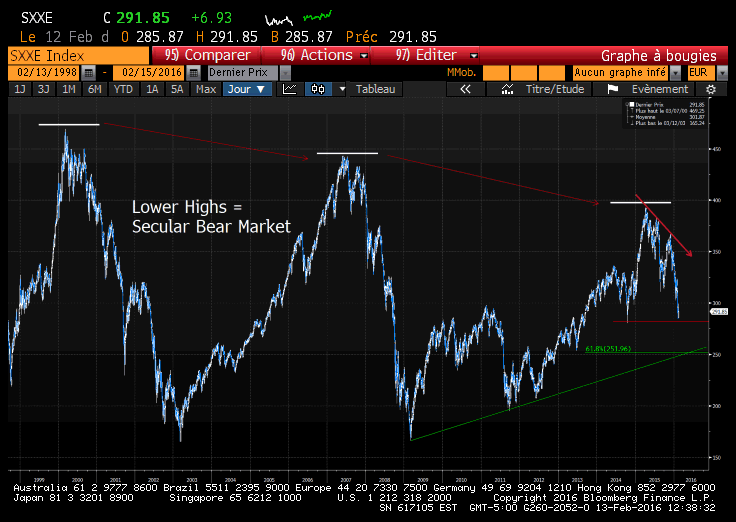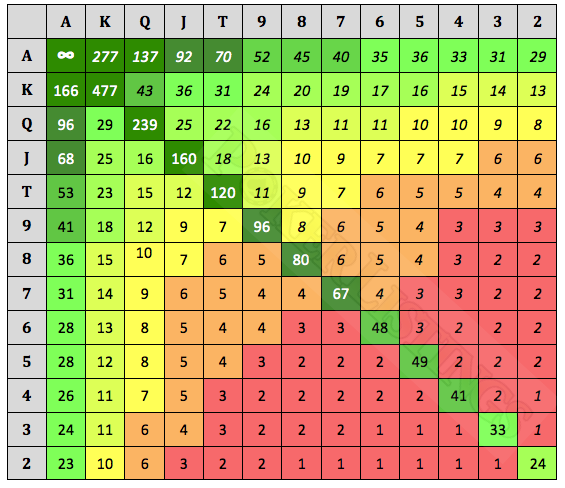Tableau Range Poker 6 Max
- Tableau Range Poker 6 Max 6
- Tableau Range Poker 6 Max Starting
- Tableau Range Poker 6 Max Games
- Tableau Range Poker 6 Max Starting Hand Chart
A range in poker refers to a certain selection of hands. When it comes to push-or-fold situations, particularly the 'x% ranges' are relevant: They consist of the strongest x% of the 1326 possible starting hands. Jul 24, 2019 Poker Starting Hand Chart (6-Max Cash, 100bb) As such, it’s essential only to raise hands that are going to be +EV to start with (for an open-raise). And thanks to the help of poker solvers like PokerSnowie and PioSolver, we can create a baseline for our 6-Max poker starting hand chart. The 6 Max game is a very popular 6 Player game that is available when playing Online Poker. This is typically a very aggressive and fast game. When starting out in the 6 Max game, it is recommended to err on the side of playing too tight, then loosening as you get a feel for the players and site conditions. Put simply, 6-max is a format that allows a maximum of six players to be seated at the table. Traditional ‘full-ring’ games, by contrast, allow up to 9 players. This means that the positions from which we play the tightest — UTG (Under the Gun), UTG+1 and UTG+2 — no longer exist in 6-max; the positions are as follows. This 6-max Preflop Chart was developed by our coaching team, after analyzing 15 million hands – so you can rely on it fully. We paid special attention to making the chart simple to use, and fitting on 1 page for ease of use. It will give you an edge at the tables, so make sure you either print it out, or memorize it.


6-Max Tournament Strategy And The Differences Between Short Handed And Full Ring Tournaments
While 9 or 10 player tables still make up the majority of poker tournament formats – 6-max is catching up fast. This article compliments the many poker tournament strategy basics articles here at SNG Planet by highlighting some strategies which are specific to the short-handed tables. By the end of this article you will be able to switch between different table sizes effortlessly, and you will know the kind of mistakes to watch out for from your opponents.
I’ll start with a quick summary of short-handed games, what ‘counts’ and some situations where full-ring tournaments play with 7 or fewer players at certain times. Next the drivers of the strategy adjustments you will need to make to succeed in a 6-max game. Finally some more advanced topics, for those who want to turn a basic understanding of the strategy into something more profitable.
Short-Handed Poker Tournament Strategy – What Is Included?
Tournaments range from 2-player tables, through 4-max (at PokerStars), 5-handed (OnGame), 6-max (most sites) and up to the larger 9 and 10 player tables. This article will focus on the 6-handed tournaments, though a lot of the strategy covered will work just fine in 4 or 5 handed games.
If you play the full-ring tables, there are often times when you find yourself playing short-handed. The final table is the obvious situation, where hopefully you get to play all the way from 10 players to heads-up. There are also ‘bubble’ situations from 3 tables (where in 9 player games you will find 2 tables of 6 and one of 7) and 2 tables to go, where you find two tables of 5 players for a 9-handed final table. You might also find situations where one of more players is sitting out. When this happens, being able to quickly adjust to the short handed situation will give you a real edge on your opponents.
If you are in the process of learning the game, or simply looking for a profitable alternative, I recommend you check out 888 Poker where the ratio of grinders / recreational players is much better than at PokerStars. Click here to check out the easiest shorthanded poker tournaments online at 888Poker.com!
6-Max Poker Tournaments – Overview Of Strategy Considerations
Blind pressure drives your strategy in 6-max poker tournaments. It does this both directly and indirectly.
The direct effect is that, since the blinds come to you faster, you have to be more active in accumulating chips in order to keep your stack from shrinking. This means playing more hands, and playing them more aggressively. In a full-ring tournament you can get away with waiting for a decent hand to play (though you still need to make some moves). In a 6-handed tournament this is a bad strategy, especially during the mid to late stages.
Indirect effects on your strategy occur because everyone else is playing more hands and playing them more aggressively. Since your opponents are less likely to have a strong hand when they bet or raise – you can re-adjust to this by playing back ‘lighter’, making moves like re-stealing or even letting opponents spew their chips by trying to push you around when you do have a great hand.
Sure, the first 3 positions from a full-ring table are missing, and so your base starting hand requirement will be lower. However, for me this is not quite enough to cope with the more aggressive game. If you never raise ‘light’ then you’ll both blind away and observant opponents will know that your raises are with the better hands from your range. Conversely, if you get into the habit of raising too big a range, you set yourself up for re-steals – especially during the middle to late stages with shallower chip stacks.

6-Max Tournament Strategy – Advanced Factors
You will find a lot more ‘BVB’ play in 6-max games. This is Button against Blind(s) and has a dynamic all of its own that you need to understand. Finding the sweet spot of hands to defend your blind with will often depend on who is on the button and their tendencies as far as raising (especially when folded to) and whether they will tend to call re-raises or fold. You need to defend more in a 6-max game, and you’ll need to steal more too! Remember, the button is a strong position, acting last on all the post-flop betting rounds. I like to steal more and defend less in a full-ring game, with 6-handed poker tournaments you need to practice both!
Set mining and is slightly less valuable when short-handed. Since your opponents are less likely to have a great hand to pay you off with. In a full ring game where is a better chance someone has a premium hand in a raised pot which will pay you off when you hit, in 6-max you might win a bet on the flop, but getting someone to stack-off is more difficult. By flat calling a raise with your pair in an aggressive game you might find a re-raise (‘Squeeze’) coming from behind you.
Tableau Range Poker 6 Max 6
Your image at the table will be a bigger factor when playing short. This works at both the aggressive and tight / passive ends of the spectrum. If you never defend, never 3-bet and never call anyone else’s 3-bets without a hand then you can expect to be noticed and become a target. If you raise mechanically every time you are folded to then you can expect this to be noticed too – and for people to start playing back at you ‘light’. Of course, as you gain experience at the tables you can use people’s impressions of you to your advantage by making some moves. While you are learning the game it effective just to be aware that your image matters, and to mix up your play to avoid this becoming an issue.
6-Max Tournament Strategy – Summing It Up
Tableau Range Poker 6 Max Starting
These games are ideal for players who like to get involved, play post-flop and are able to make moves to play back at their opponents when the situation is right.
Tableau Range Poker 6 Max Games
You should be aware that not all 6-max games are equal when it comes to the experience level and skills of your opponents. If you are in the process of learning the game, I recommend you check out 888 Poker – where the cross-over traffic from the big casino keeps the games very profitable. You can even grab $8 free to try out the games… any who knows, you might end up turning this into a big tournament bankroll! Click here to check out the best 6-max poker tournaments online – at 888Poker.com.